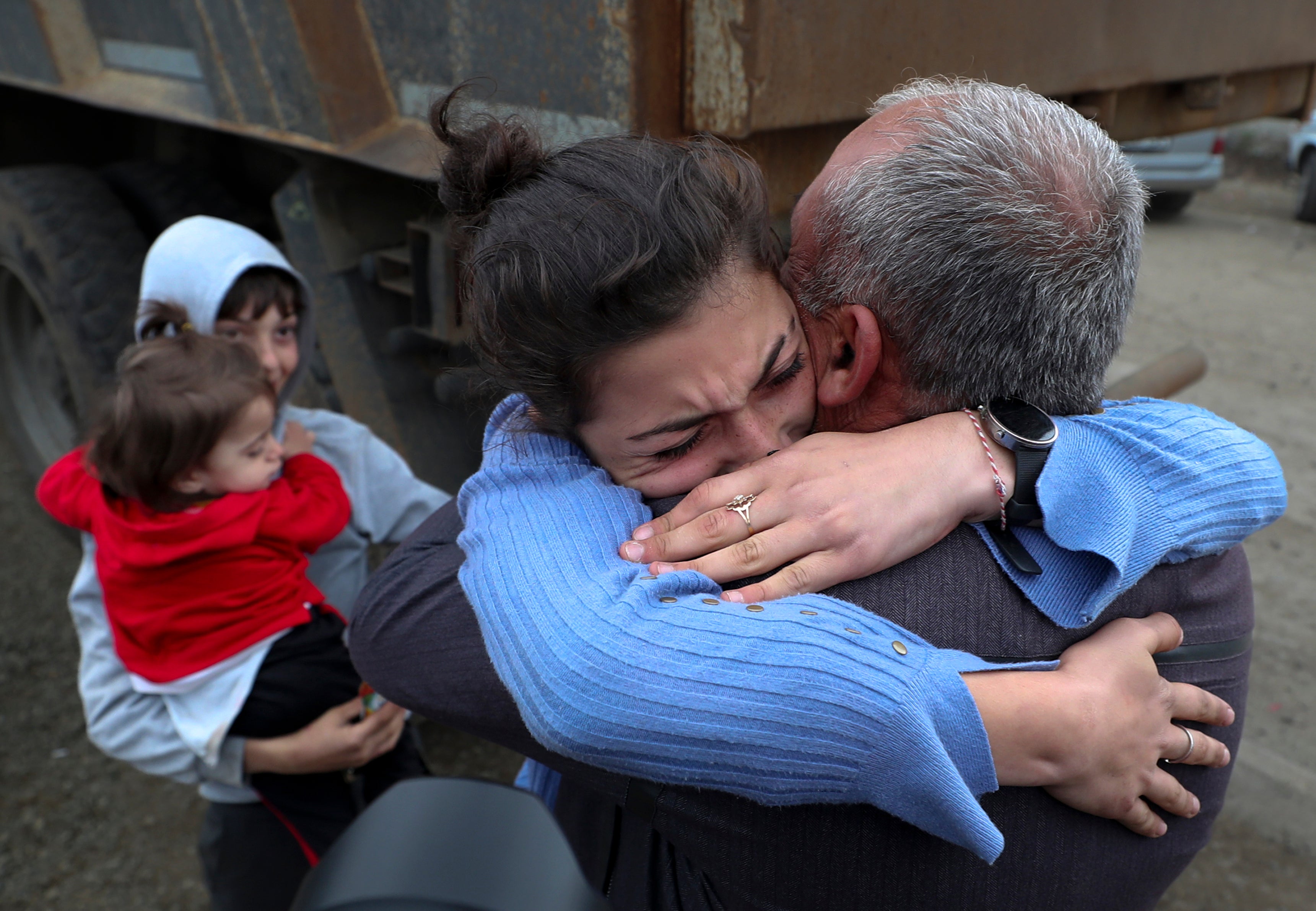Azerbaijan arrests former Karabakh leader as Armenian exodus grows
Nearly 45,000 flee after lightning military offensive by Azerbaijan in breakaway region

Azerbaijan has arrested the billionaire former leader of Nagorno-Karabakh as he tried to join thousands of other Armenians fleeing across the border amid fears of ethnic cleansing.
Ruben Vardanyan, who served as the head of the regional government for several months before stepping down earlier this year, was detained as he tried to cross into Armenia from the breakaway region.
Mr Vardanyan, who owned a major investment bank in Russia, was escorted to Baku and handed over to the “relevant state bodies”, Azerbaijan’s border guards said. They posted a picture of Mr Vardanyan held by two guards next to a helicopter.
More than 42,500 Armenians are said to have left for Armenia since Baku’s lightning operation last week to take control of the region, which is internationally recognised as being part of Azerbaijan.

The mass exodus marks one of the biggest movements of people in the South Caucasus since the fall of the Soviet Union.
Armenians who have remained in the main city of Staperankart, which Azerbaijan calls Khankendi, said people were fleeing a growing humanitarian crisis and had fears of violent reprisals. Baku has repeatedly dismissed these accusations as untrue.
“We don’t want to flee our homeland, but we have to in order to save our children’s lives. We still hope that the international community can do something,” said Artak Beglaryan, a former adviser to the self-declared government in Nagorno-Karabakh, which Armenians refer to as Artsakh.
“The whole area is emptying, maybe 90 per cent are leaving now. Tell the world that this is ethnic cleansing and genocide.”
In the miles-long tailbacks which have brought the hairpin road to Armenia to a standstill, families have been forced to sleep in their cars and gather firewood to warm themselves by the side of the road. There, elderly Armenians said that they had nowhere to go.
“I left everything behind. I don’t know what is in store for me. I have nothing. I don’t want anything,” Vera Petrosyan, a 70-year-old retired teacher, told Reuters.
Inside Staperankart, families are living on increasingly dwindling food handouts.
“One single bakery is operating in the city by Russian peacekeepers, but it is not enough,” Siranush Sargsyan, a freelance Armenian journalist wrote on X, formerly known as Twitter. “The food shortage situation… is critical.”
Azerbaijan has faced rising international criticism for its actions in Nagorno-Karabakh, particularly after it imposed a blockade in December, leading to shortages of food, electricity and gas.
At the time, Azerbaijan accused the Armenian government of using the road for minerals extraction and illicit weapons shipments to separatist forces. Then last week, Baku launched its 24-hour military offensive to take back control.
On Wednesday, Azerbaijan’s health ministry said that nearly 200 of its troops had been killed and more than 500 wounded in the ensuing fighting. Nagorno-Karabakh officials had earlier said that at least 200 people on their side, including 100 civilians, were killed before breakaway forces laid down their weapons.
Armenia, which is backed by Russia, and Azerbaijan, which is supported by Turkey, have fought two wars over this region in 30 years since the collapse of the Soviet Union. In a six-week conflict in 2020, Azerbaijan gained back about a quarter of its territory in the area.
Since the most recent conflict, Azerbaijan and separatist officials have held two rounds of talks about the “reintegration” of Nagorno-Karabakh into Azerbaijan, but so far no final peace agreement has been reached.
Azerbaijan’s president Ilham Aliyev has promised to respect the rights of ethnic Armenians but has also vowed that his “iron fist” had consigned the idea of an independent ethnic Armenian Karabakh to history.
Armenians told The Independent they “cannot live under the subjugations of the Azerbaijanis” and that they feared ethnic cleansing and violent reprisals by Baku’s army, which now encircles the main city.
As thousands rushed to leave, there was a major explosion at a fuel depot in the Askeran district of Nagorno-Karabakh on Monday, adding to the humanitarian crisis. There were conflicting details about the toll of the blast but the ethnic Armenian authorities said at least 68 people had been killed, 105 were missing and nearly 300 were injured.




Join our commenting forum
Join thought-provoking conversations, follow other Independent readers and see their replies
Comments